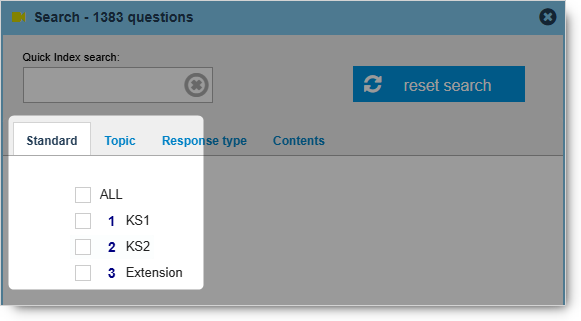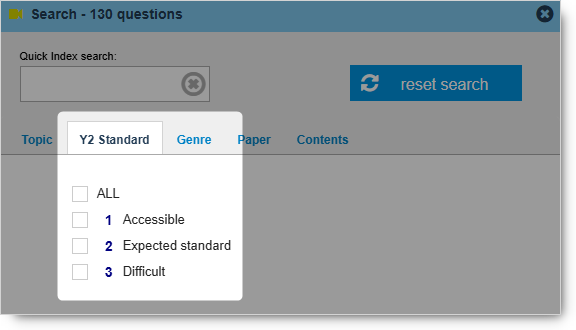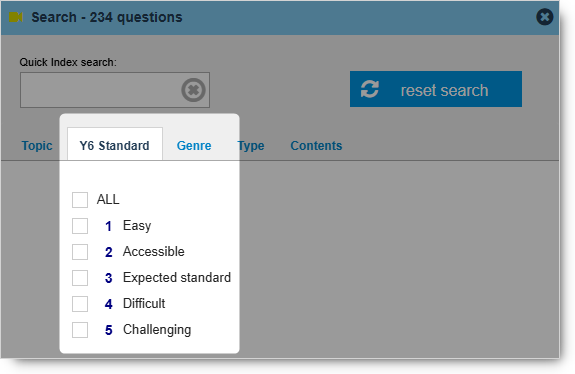Yearly Standard Explained
Finding the correct level of difficulty
Yearly Standard helps you to find questions at the correct level for your pupils.
Questions are graded for difficulty in a relevant way for each subject.
For example, the Primary Grammar and Punctuation and the Key Stage 1 Reading questions are graded under three levels of difficulty.
Grammar and Punctuation | Reading |
Whereas the Key Stage 2 Reading question bank and maths questions are graded into 5 levels in order to offer an extra level of granularity to question selection.

Classification of Yearly Standard for Maths explained
| Easy | If the content only appears in the curriculum in previous years. |
| Accessible | For a child 'developing' this skill. |
| Expected Standard | What a child is 'expected' to know and understand. |
| Difficult | For those working at 'greater depth'. |
| Challenging | If the content only appears in later years, but it may be possible to do because the concept has been taught. For example, adding 4-digit numbers is a Y4 objective but could be "challenging" for Y3 as adding has been taught. |
Please note, for our KS1 maths question banks each question is graded by level of difficulty for Year 2 only. Year 1 teachers can narrow their search by the relevant Year 1 national curriculum objective(s). Questions classified as ‘easy’ or ‘accessible’ are most suited to their year 1 pupils.